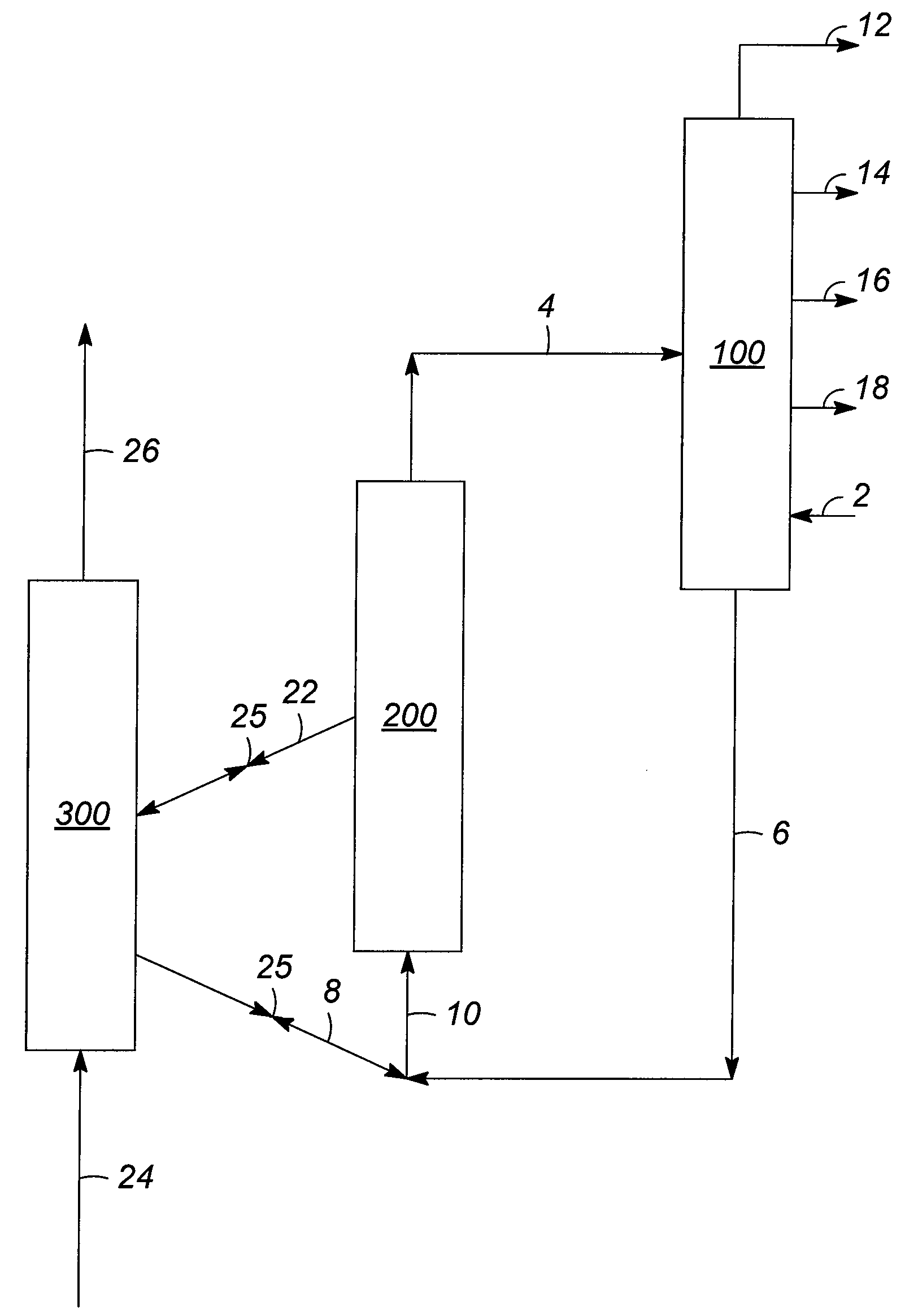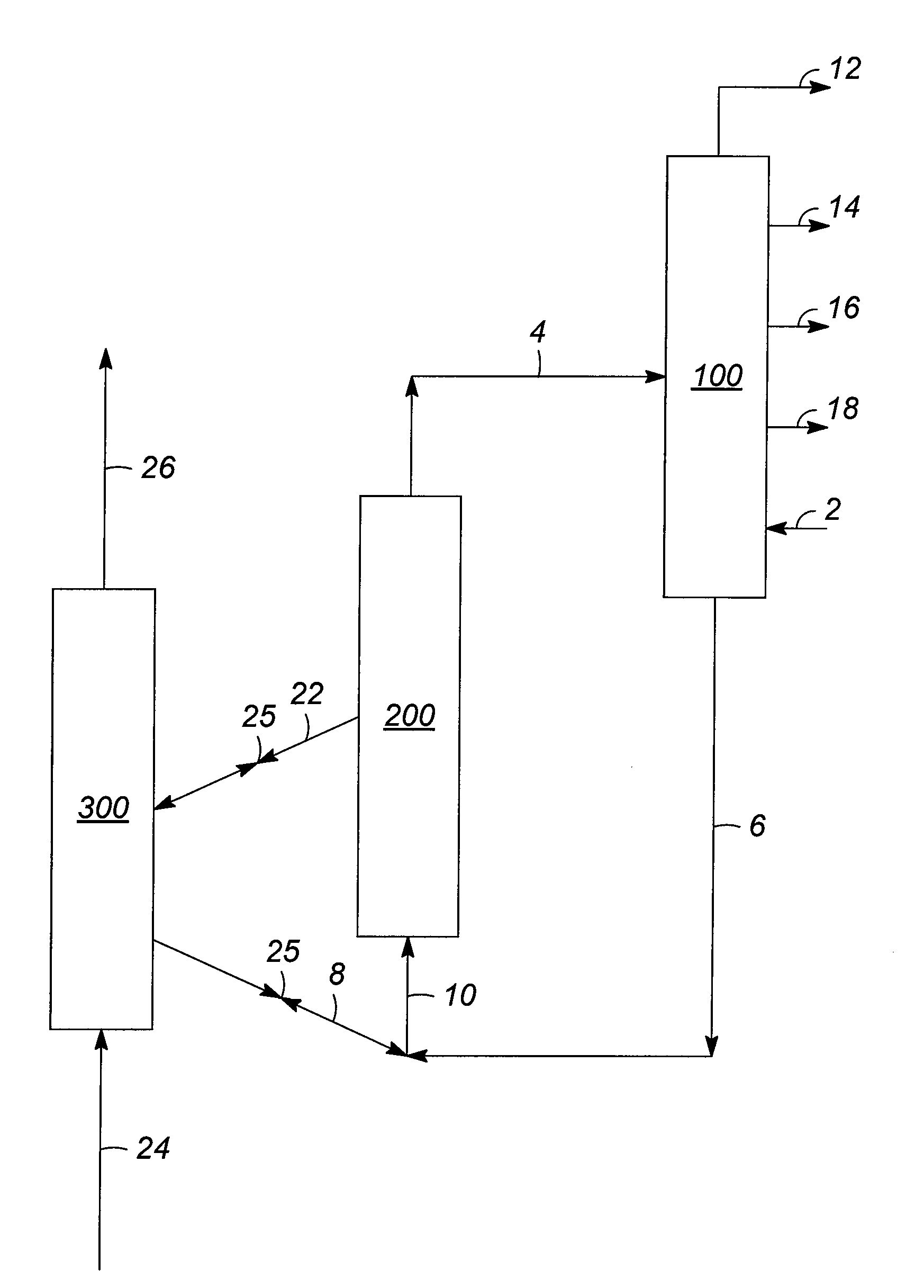Direct feed/effluent heat exchange in fluid catalytic cracking
- Summary
- Abstract
- Description
- Claims
- Application Information
AI Technical Summary
Benefits of technology
Problems solved by technology
Method used
Image
Examples
example 1
[0036]Computer modeling was used to predict product yields obtained from fluid catalytic cracking (FCC) using, as a hydrocarbon feed stream, a hydroprocessed hydrocarbon stream. This stream was namely a representative high boiling hydrocarbon fraction obtained from a commercial hydrocracker, at a 10,000 barrels per stream day (BPSD) flow rate. In particular, the model simulated the direct heat exchange between this hydrocarbon feed stream and the FCC effluent in the FCC main column. The simulated main column bottoms stream was a hydrocarbon fraction comprising >95% by volume of hydrocarbons boiling at a temperature of greater than 343° C. (650° F.). According to the yield estimating model, conversion of this stream in the FCC reaction zone provided a greater than 65% by weight yield of a gasoline boiling range hydrocarbon fraction, characterized as C5+ hydrocarbons having a distillation temperature of 193° C. (380° F.) at the 90% recovery point. The simulated regeneration gas stream...
PUM
| Property | Measurement | Unit |
|---|---|---|
| Temperature | aaaaa | aaaaa |
| Temperature | aaaaa | aaaaa |
| Temperature | aaaaa | aaaaa |
Abstract
Description
Claims
Application Information
 Login to View More
Login to View More - R&D
- Intellectual Property
- Life Sciences
- Materials
- Tech Scout
- Unparalleled Data Quality
- Higher Quality Content
- 60% Fewer Hallucinations
Browse by: Latest US Patents, China's latest patents, Technical Efficacy Thesaurus, Application Domain, Technology Topic, Popular Technical Reports.
© 2025 PatSnap. All rights reserved.Legal|Privacy policy|Modern Slavery Act Transparency Statement|Sitemap|About US| Contact US: help@patsnap.com


